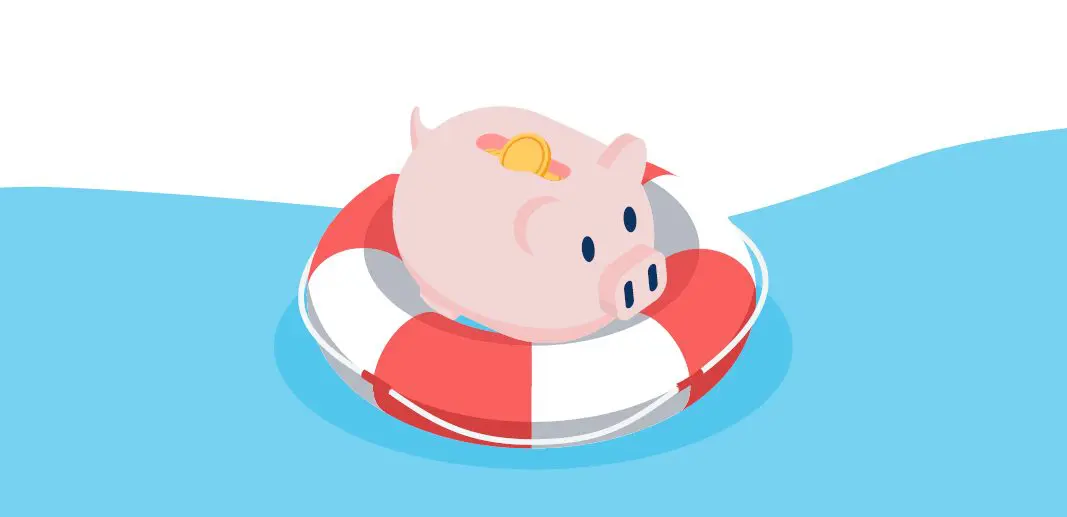Categories


Life is unpredictable. We hope for the best, but things still go awry from time to time: we get sick, our car breaks down, or we incur expenses we didn’t foresee.
It’s impossible to plan for every single scenario, but we can take steps to make it easier for ourselves when an emergency arises. Creating an emergency fund is a great starting point – you never know when having that extra bit of cash will come in handy! Here’s how to get started:
Set a Goal
The first step we should take to build an emergency fund is deciding on a goal. How much money do we hope to save?
People have different ideas of how much money should be in a strong emergency fund, but you generally want to be able to cover at least three to six months’ worth of your expenses if – worst-case scenario – you lose your job.
Sit down with your most recent account statements and look at how much you typically spend in a month. Multiply that amount by the number of months’ expenses you hope to save for, and you have your goal number!
Here’s a formula to help you:
Total Monthly Expenses x # of Months to Save For = Total Savings Goal for Emergency Fund
Let’s look at an example of how this works in real life:
Angela makes $4,000 per month and has $3,500 in monthly expenses including rent, utilities, student loan payments, groceries, and so on. She wants to save three months’ worth of expenses so that she has an emergency fund, but she isn’t sure how much her total savings goal should be.
Angela should take her monthly expenses ($3,500) and multiply that by the number of months she wants to save for (three months). $3,500 x 3 = $10,500. Angela’s goal for her emergency fund is $10,500.
Decide How Much You Can Save Each Month
Next, we should figure out how much we can set aside to save each month.
How much money do you typically make in a month? Once you take care of necessities like bills and groceries, how much is left that can reasonably be saved?
Make a note of that number and try to put that amount into your emergency fund each month.
Here’s another formula that can help you figure this out:
Monthly Income – Total Monthly Expenses = Potential Savings Goal Contribution
Let’s revisit Angela for a moment. Angela makes $4,000 per month and is responsible for $3,500 in monthly expenses.
To determine how much she can contribute to her Emergency Fund, Angela should subtract her expenses from her income. $4,000 - $3,500 = $500. Angela has a maximum of $500 that she can put into her savings each month.
Start Saving
Now that we’ve made our plan, it’s time to start saving! Here are a few tips to help you in the process.
Tip #1: Divide your goal into smaller, more manageable chunks.
Building up an emergency fund takes a while, and it’s easy to lose motivation.
Try dividing your goal into smaller milestones that you can reach more quickly. That way, you can feel a sense of accomplishment which will help you stay motivated to save.
For example, if your goal is $10,500 like Angela, you could divide your goal into $750 chunks. Every time you add $750 to your savings, you will feel like you are making concrete progress towards your goal.
Tip #2: Avoid spending money unnecessarily.
Impulse purchases are a real thing, so try to be mindful when you’re out shopping. Before adding a last-minute item to your cart while waiting to check out, ask yourself, “Do I really need or want this?” If the answer is no, put it back and set aside the difference for your emergency fund.
Tip #3: Check in monthly to make sure you are on track.
At least once a month, review your emergency fund to track your progress. Have you been able to contribute the amount you hoped to? If not, do you need to adjust your goal to fit your current circumstances?
Use these monthly check-ins as an opportunity to reflect on your spending habits and to celebrate your wins.
Tip #4: Don’t get discouraged.
While it’s great to celebrate reaching savings milestones, don’t feel discouraged if you need to dip into your emergency fund before you reach your final goal.
That’s why the emergency fund is there – to help if you find yourself in a tight spot! Do what you need to do to handle the current emergency and then resume saving when you can.
Reach Your Goal
Once you reach your goal, take a moment to celebrate! You did it – you set a goal, worked toward it each month, and finally achieved it. Be proud of yourself!
Try to leave that money alone unless there is an actual emergency. It can be tempting to dip into it when it’s just sitting there but resist the urge. That money might come in handy one day.
Keep Going
If you can, continue saving money each month. You don’t have to keep adding to your emergency fund; you could start saving for a new car, a down payment on a house, or even presents for the next holiday season. Try to turn your new savings habit into a life-long financial practice!
This material is for educational purposes only and is not intended to provide specific advice or recommendations for any individual.



